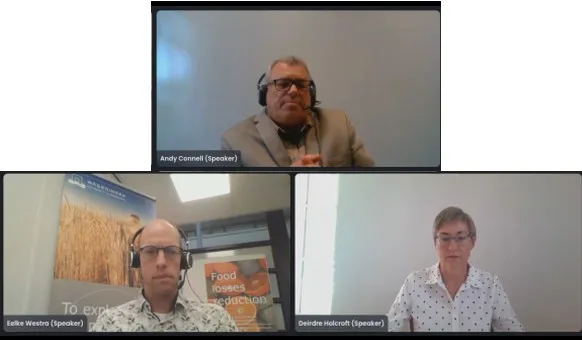Food waste is a big issue and last week’s Cool Logistics Conference looked in to food waste in the cool chain with a session on how post-harvest operations can reduce waste and minimise environmental impact.
Deirdre Holcroft, Consultant, Holcroft Postharvest Consulting said that when we look at food waste, we need to look at the whole chain right from the farm to the end consumer, and that it is no longer acceptable to consider the bin as one of our consumers. She said that we also need to be aware of the consequences on the environment: greenhouse gas emissions and wasting energy during production.

Eelke Westra, Programme Manager Post-Harvest Quality, Wageningen Food & Biobased Research, Wageningen University said that the first step is to be aware of waste; how much are you creating? are you responsible for this? what is the cause? He said we must also look at the definition of quality and what do the producer and the various people along the chain see as quality? This definition must be right so as not to create confusion and food waste.
Andy Connell, Lead Technical Consultant, A-Bar-C Services said that consumers buy with their eyes and while small external blemishes don’t look good it does not mean that the product is bad. There is a need to educate consumers on this.
Deirdre said that there are a lot of interesting post-harvest innovations to extend shelf life, but asked the question Is extended shelf life overrated? And does it allow perishables to stay longer in the cold chain and still reach the consumer at the same quality?
Eelke stated that over the last 20-30 years there has been lot of effort to extend shelf life and we need more data knowledge to make better decisions.
Deirdre said that because fresh produce is still living and breathing coatings can in fact alter the taste. She said we have technology with a lot of promise but if we can’t combine them with a good cold chain then they won’t work. She commented that unfortunately the products that could benefit most from coating are the ones on which they can’t be applied, for example lettuce. Technology has to be adapted as fresh produce is not a ‘one size fits all’ business. Deirdre said that good temperature management accounted for 60-70% of shelf life extension while treatments only accounted for 25%.
Andy said that good quality starts in the field and the supply chain starts right after harvest and can only preserve that quality. He said that many people in the supply chain don’t understand what happens at the farm level. If people understood the whole process better they would have more understanding of why damages could occur along the way. Logistics and marketing people need to be more involved in the growing process and understand the supply chain and where best to use technology.
He went on to say that if people are using temperature monitors as a tool for claims, then that is the wrong reason. They should be used to police the supply chain and make improvements.
Although Deirdre didn’t see the need for logistical providers and marketing people to be involved at the farm level she did say that they must understand that the first mile handling has a big impact on quality which they may not see until the end of the supply chain. There was a need to improve the rapid cooling of produce from the field and also a need for more data to provide feedback. She added that if we don’t get the cool chain right, we will see a move to more local production with bigger indoor production which will have a bigger environmental cost.
